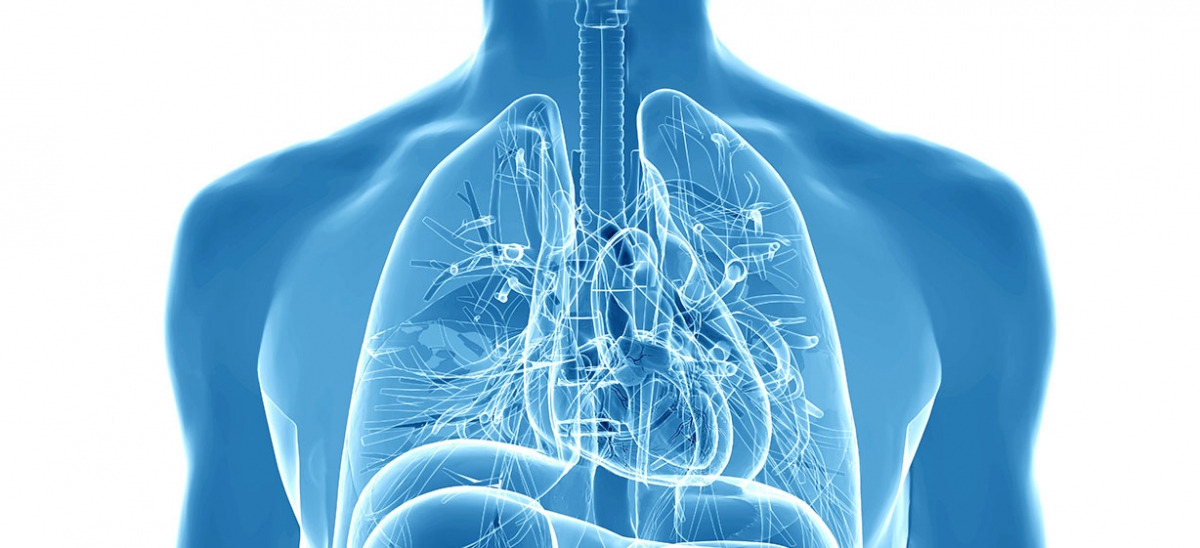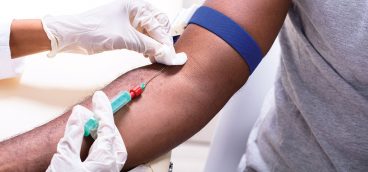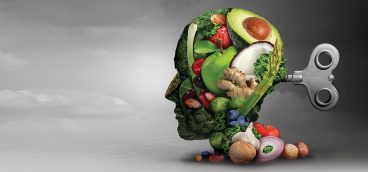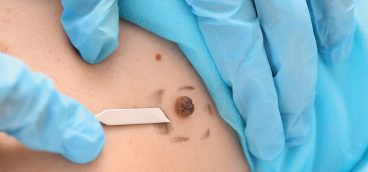Three Percent of You Isn’t You

Susan Lambie was desperate. It was the summer of 2009 and her mother’s health was deteriorating rapidly. What began as a cold turned into pneumonia. Then her mom developed Clostridium difficile—a nasty bacterium that causes severe diarrhea.
Each year, C. diff strikes more than a half million people, especially the elderly after taking antibiotics, as with Lambie’s 91-year-old mother. Knowing that C. diff was becoming more severe and difficult to treat, Lambie searched for anything to help her mom and discovered fecal transplants.
“At first thought, it sounds horrid. But the success rate is up to 90 percent in published studies,” says Lambie, a clinical dietitian in Monroeville at Forbes Regional Hospital, part of Allegheny Health Network.
A fecal transplant (or bacteriotherapy) is just what it sounds like: You take stool from a healthy donor and place it inside the sick person’s colon. It’s a mystery as to why it works, but it seems to promote a healthy flora of gut microbes, crowding out bad ones like C. diff.
A Greensburg doctor taking care of Lambie’s mother agreed to try the procedure. But it was too late. “It would not have benefited her at that time, but the doctors did take me seriously,” Lambie says. By then, her mother’s kidneys had started to fail, and she passed away in July of that year. Lambie’s quest to help others with C. diff didn’t stop there. She contacted an Allegheny General Hospital doctor and began sending him all of the information she had gathered. Dr. Paul Lebovitz, a gastroenterologist, embraced the idea and helped bring a formal fecal transplant program to Pittsburgh.
More of them than us
This procedure is just the beginning of a new era in healthcare. We’ve known that tiny organisms flourish on and within us ever since the 1600s when the inventor of the microscope scraped scum off his teeth and observed swimming organisms. And, of course, a slew of antibiotic and antifungal drugs have long been helping us kill troublesome invaders. What we didn’t know until the last decade or so is that this collection of trillions of bacteria, fungi, viruses and other organisms—our microbiome—may play a larger role in our health than ever imagined.
In a healthy adult, non-human cells outnumber human cells 10 to 1, weighing about the size of a miniature dog. “There’s more of them than us,” says Dr. David Hackam of Children’s Hospital of Pittsburgh of UPMC. “For the most part, they want to stay alive, so they have to keep us alive too. In so doing, the microbes within our bodies have a huge impact on our health.”
Now that scientists have the technology to sequence the genetic blueprints of the 10,000 or so species living inside us, they hope to use this knowledge to tackle some of today’s toughest illnesses. “We are targeting a lot of different diseases—acne, inflammatory bowel disease (IBD), and even cancer and diabetes,” says George Weinstock, Ph.D., heading the Human Microbiome Project that’s providing unprecedented insight into how our tiny passengers support our health or trigger disease (see sidebar: Far more than human). Weinstock’s research at Washington University at St. Louis is exploring whether typical colds or flu or even antibiotics can induce the onset of type 2 diabetes in those with pre-diabetes.
Fecal transplants, Weinstock says, “are likely to be the poster child of why we need to understand the micro-biome, how to manipulate it and how to use it to prevent and treat disease.”
Can’t live without them
While some microbes make us sick, most don’t, and even perform important functions that we can’t do ourselves. They extract nutrients from what we eat, synthesize vitamins, metabolize drugs, detoxify carcinogens, stimulate renewal of cells in our gut. Importantly, they activate and help support the immune system. Microbes in our nose, for example, make antibiotics to kill dangerous pathogens we sniff.
When we’re born, we start collecting microbes as soon as we pass through the birth canal. Breast milk is known to supply newborns with key bacteria, and in fact is the only known way to help prevent a life-threatening digestive illness that strikes 15 percent of all premature babies, says Dr. Hackam.
Necrotizing enterocolitis (NEC) can destroy a baby’s GI tract and is a leading cause of death in this vulnerable population. No one knows what causes NEC, but research is showing that preemies have less diverse flora of bacteria in their guts. “Maybe this allows certain bacteria to get a foothold and create trouble,” says Dr. Hackam, director of the Center for Pediatric Surgical, Translational and Regenerative Medicine at Children’s Hospital of Pittsburgh.
His research lab has discovered that NEC develops after a particular molecule is activated by bacteria growing within the infant’s intestine. When this occurs, the intestine becomes inflamed and dies. Dr. Hackam hopes to use this insight to prevent or stop the disease’s toll.
Because some of his patients lose their GI tracts, Dr. Hackam’s research lab is also working to build the world’s first artificial intestine using a baby’s own stem cells. He hopes it can serve as a bridge to an intestinal transplant. Populating the GI tract with a healthy microbiome will be part of the challenge.
Disrupting the balance
Life in our overly hygienic world seems to be upsetting the delicate balance of our internal ecosystems. Chronic inflammatory diseases such as rheumatoid arthritis and IBD are not as widespread in parts of the world where people’s immune systems are regularly fighting off parasites and other organisms that have largely been eradicated in the Western world. “Maybe the microbiome is the answer to all of these chronic inflammatory diseases that you don’t see in Africa,” says Dr. Lebovitz, who specializes in ulcerative colitis, Crohn’s disease, and the worst manifestations of digestive disorders.
It took Dr. Lebovitz and others at Allegheny Health Network over a year to set up a fecal transplant program to treat C. diff. AHN doctors have achieved about a 75 percent success rate after performing roughly 10 fecal transplants. Dr. Lebovitz credits Susan Lambie as “the soul of the program.” When she brought the idea to him, he was receptive. Like her, it was mainly out of desperation. “The truth of the matter is, when you have the kind of practice that I have, I see patients who have failed all therapies, so we’re always looking for something else we can do.”
In recent months, studies out of Europe have revealed that some patients get worse after a fecal transplant. Dr. Lebovitz doesn’t think it will be the final answer to curing C. diff, but an effective future treatment will likely involve giving patients some sort of fake stool that has the right mix of bacteria, growth factors and other things to restore a healthy intestinal habitat.
“We’re going to continue to forge ahead and hopefully we’ll be able to do fecal transplants on an outpatient basis,” he says.
For now, AHN only does fecal transplants as an in-hospital procedure during a colonoscopy for very sick patients who’ve had recurrent C. diff. Mary Ryan, 64, of Elizabeth Township was one of those patients. She came down with C. diff in January 2013. For months, she had to wear a diaper and only left the house when she had to.
She took every imaginable medication. At one point, she was hospitalized for dehydration. Not even a fecal transplant worked. So finally, at home, she mixed water and stool from her 12-year-old granddaughter and did four enemas on herself. “When you have diarrhea around the clock like that, you’re about to try anything,” Ryan says. She later told Dr. Lebovitz what she had done.
“I told her I thought that was a bad idea,” Dr. Lebovitz says, “but she said ever since she did those four enemas she believes her C. diff is gone… This is a whole new world. It’s really fascinating.”
For Ryan, it was a miracle.




